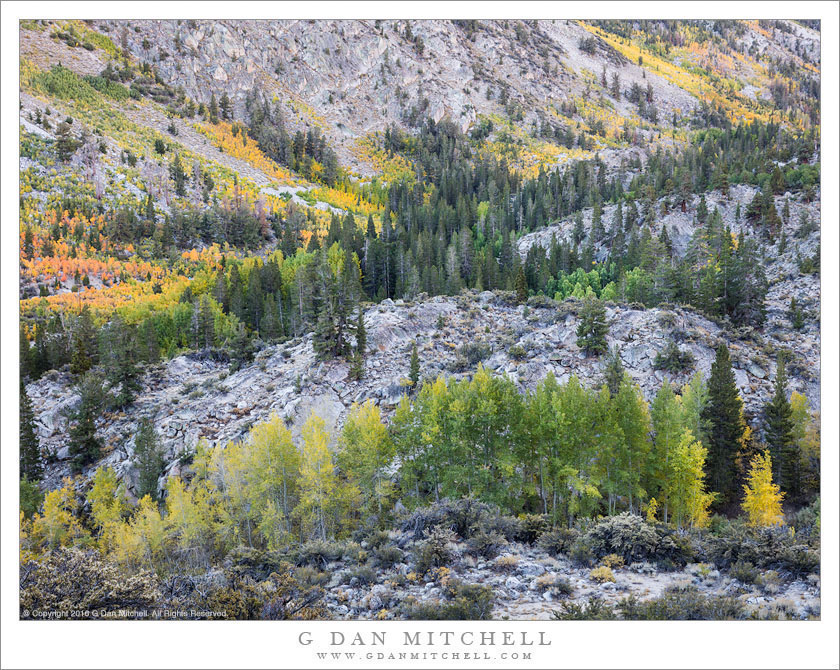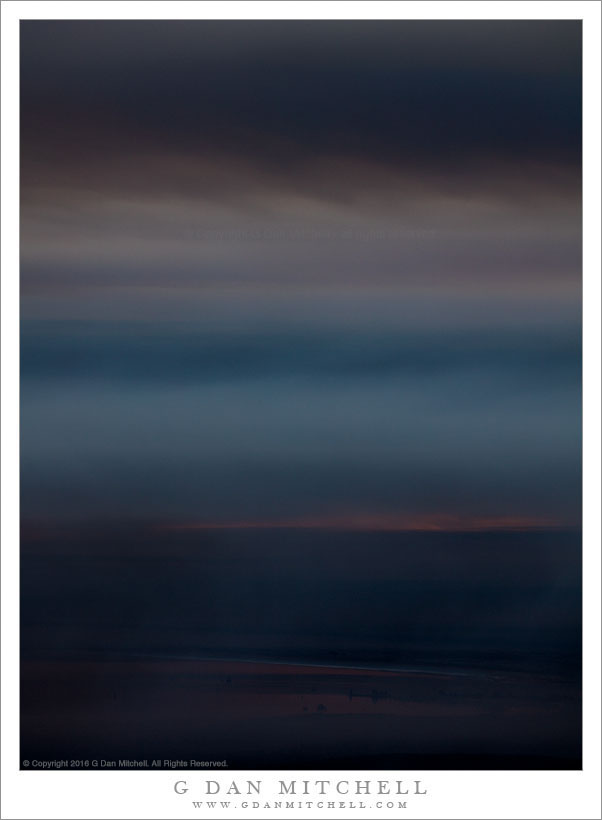
Black Point and Negit Island. © Copyright 2021 G Dan Mitchell – all rights reserved.
Tufa formations, Black Point, Negit Island, and distant hills in sunset light at Mono Lake.
Yes, this is yet one more — but probably the last — of the photographs of this lovely autumn evening at Mono Lake a few years ago. Most of the others feature the rising full moon, but I made this one a few minutes before that event, while the last of the day’s sun was still streaming over the Sierra crest and striking the tops of the mountains to the east of Mono Basin.
Besides being a photograph of a beautiful time of day at the lake, the scene includes a number of important little elements that might not be immediately obvious. In the foreground we see a few of the ubiquitous tufa formations that dot the border of the lake, quite a few of which were revealed when Los Angeles’ thirst for Sierra Nevada dropped the lake level. This also reveals sections of the curving lake shore that would have been underwater some decades ago. At the far left is the dark bulk of Black Point, and intriguing formation that few get to actually visit. Just of Black Point’s shoulder is Negit Island, one of two volcanic islands in the lake. to its right you can barely see the low north side of larger Paoho island. And those far mountains where a bit of sun still shines are a very long ways away, and it a location that is pretty close to inaccessible.
G Dan Mitchell is a California photographer and visual opportunist. His book, “California’s Fall Color: A Photographer’s Guide to Autumn in the Sierra” is available from Heyday Books, Amazon, and directly from G Dan Mitchell.
Blog | About | Flickr | Facebook | Email
Links to Articles, Sales and Licensing, my Sierra Nevada Fall Color book, Contact Information.
Scroll down to leave a comment or question.
All media © Copyright G Dan Mitchell and others as indicated. Any use requires advance permission from G Dan Mitchell.



